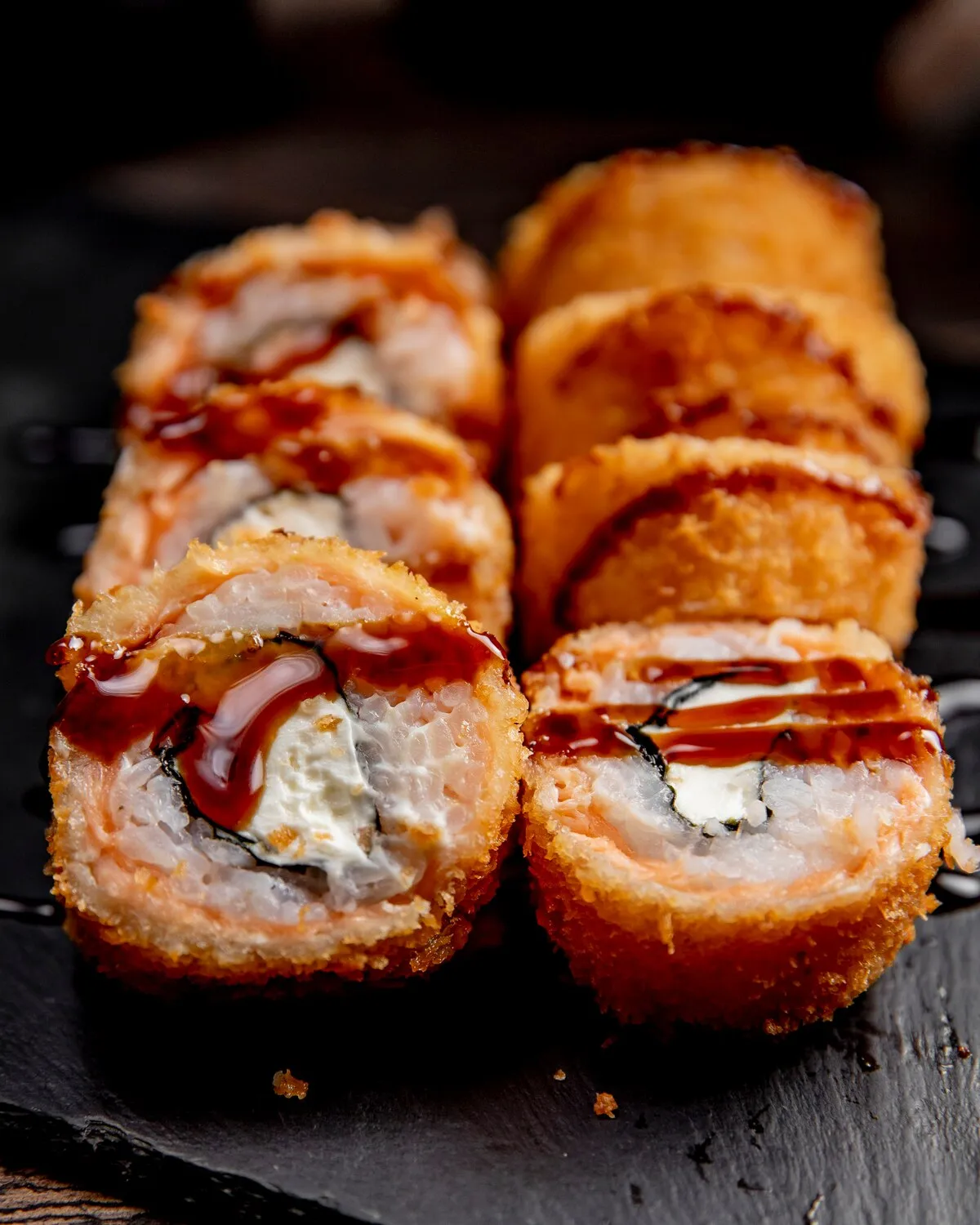
Hot Roll
Fried sushi roll with various fillings.
Nutrition Facts
* The % Daily Value (DV) tells you how much a nutrient in a serving of food contributes to a daily diet. 2,000 calories a day is used for general nutrition advice.
Don Doh Cozinha Nikkei
While sushi originated in Japan, the Hot Roll is a distinctly American invention, born from the desire to adapt and create variations of traditional sushi to suit local palates. Deep frying sushi is a relatively recent phenomenon, emerging as a popular trend in sushi restaurants across the United States in the late 20th and early 21st centuries. It's a fusion of Japanese technique and American culinary preferences.
The Hot Roll is a symbol of Americanized sushi, reflecting the adaptation of Japanese cuisine to American tastes and preferences. It often caters to those who may be hesitant to try traditional raw fish sushi.
Fusion Cuisine
The Hot Roll exemplifies fusion cuisine, blending traditional sushi techniques with American preferences for fried foods and rich sauces. It showcases the evolving nature of culinary traditions.
Accessibility
By frying the sushi, it often makes it more approachable for individuals who are unfamiliar or uncomfortable with raw fish, increasing the accessibility of sushi to a broader audience.
Restaurant Innovation
The Hot Roll is a result of restaurant innovation, demonstrating the willingness of sushi chefs to experiment and create new dishes to satisfy customer demand and local tastes.
The Hot Roll offers a unique combination of flavors, blending the freshness of sushi ingredients with the satisfying crunch and savory depth of a deep-fried coating. The inner components like fish, avocado, and cream cheese contribute to a creamy and fresh taste, while the fried exterior provides a contrasting texture and richer flavor.
The primary flavor profile is a balance of fresh seafood (typically salmon, tuna, or white fish) combined with creamy elements like avocado and cream cheese. The nori seaweed provides a subtle umami note. The deep-fried coating adds a crispy texture and savory, slightly oily flavor. Common sauces like spicy mayonnaise, eel sauce (unagi sauce), and sriracha further enhance the flavor complexity, adding sweetness, spice, and richness.
Roll Preparation
Make sure the sushi roll is tightly packed before frying to prevent it from falling apart. Using a bamboo sushi mat and applying consistent pressure during the rolling process is crucial.
Frying Temperature
Maintain a consistent oil temperature (around 350°F or 175°C) for optimal frying. This ensures the outside is crispy without overcooking the inside ingredients.
Batter Consistency
The batter should be light and not too thick. A tempura-style batter or a simple mixture of flour, cornstarch, and water works well. Avoid over-battering the roll.
Draining Excess Oil
After frying, place the hot roll on a wire rack to drain excess oil. This helps maintain the crispiness and prevents a greasy texture.
Explore additional Sushi dishes and restaurants
Explore SushiDiscover top dining spots and culinary experiences in Barueri.
Explore BarueriLearn more about the food culture, restaurant scene, and culinary heritage of Brazil.
Explore Brazil